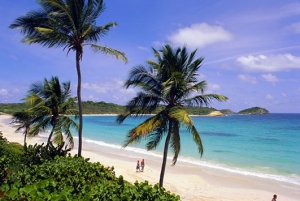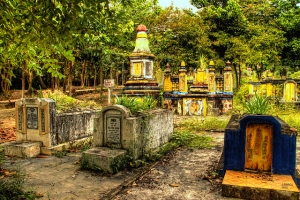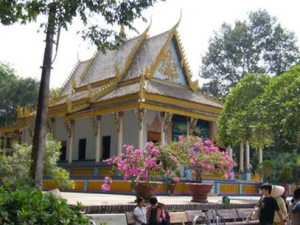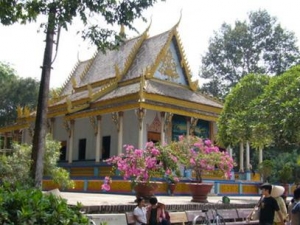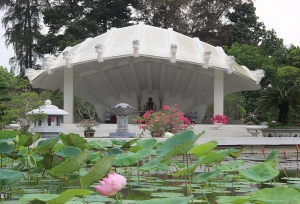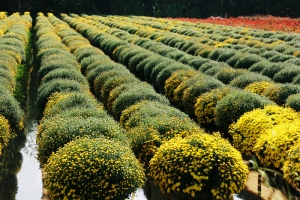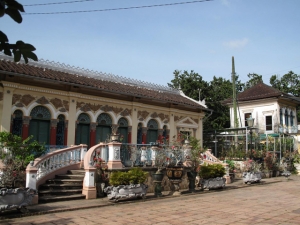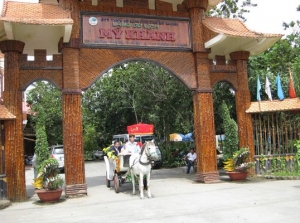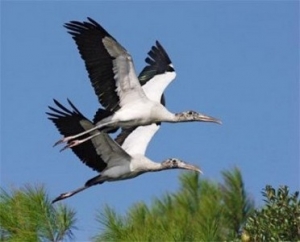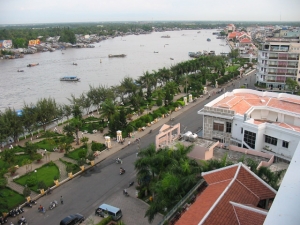
Asia Pacific Travel Team
Phu Quoc- Vietnam’s Pearl Island Located in Kien Giang
Situated in the Gulf of Thailand and located off the southern coast of Vietnam and Cambodia, Phu Quoc island is the largest one in Vietnam. With the length of 48 kilometers and the width of 28 kilometers, Phu Quoc Island is closer to the Cambodian mainland than Vietnam. It forms a triangular shape and to the west of it is the Long Beach, the longest beach of the island. Most of the accommodations in the island are along this beach.
A variety of accommodations are available throughout the island ranging from cheap bungalows to beach resorts. Duong Dong which is situated to the north of the Long Beach is the largest town in Phu Quoc Island. Even a few years back Phu Quoc was well-known for its fish sauce.
During the colonial rule of the French and the war with America Phu Quoc Island was used as a prison. Ruins of the prison are visible even today. This island has been used as a re-education camp since Vietnam gained independence in 1975.
Nearly half the island lets you view the unspoilt beauty of nature. Phu Quoc Island is covered with forests and the beaches are deserted, creating an enchanting environment in the island. It provides a spectacular view with the perfect fusion of its blue waters, sandy beaches, and beautiful landscapes. When having a chance to get this island, do not forget to view the magical sunset from the beach. Besides the famous Long beach in the island, Bai Dan and Bai Sao beaches must be regarded. Away from the beaches are the pepper fields, the rain forest, and the Suoi Da Ban river with its waterfalls.
Phu Quoc Island can be reached by both air and boat. It is less than an hour’s journey by plane from Ho Chi Minh City, Vietnam to Duong Dong. Vietnam Airlines make nearly four trips to the island everyday. Flights are available from Mekong Delta, Vietnam as well.
A ferry ride can be taken from the Rach Gia to the island. It takes around two and a half hours though it is better to avoid the ferry in rainy seasons.
Thanks to the favorable natural conditions here, Phu Quoc island is remarked as a fully promising and popular destination, attracting more and more tourists in the coming years. Therefore, Phu Quoc has been contributing to the development of Vietnam Tourism industry in general and Kien Giang province in particular.
If you are in Vietnam travel, please one time get to Phu Quoc, the largest island in Vietnam and also a Vietnam’s pearl island and admire the wonderful natural beauty of landscape here.
Discover Ha Tien’s History in Mac Cuu Family Tombs
The Mac Cuu Family Tombs are found near the town of Ha Tien, Kien Giang province. This family played a prominent role in the history of Ha Tien. During the time that the town was still part of Cambodia, Mac Cuu was the Khmer appointed to be the governor of this land. Faced by attacks from Thais, he turned for help to the Vietnamese and was able to repel the attacks.
Also known as the Hill of the Tombs, Mac Cuu and his several dozen relatives are buried here complete with traditional Chinese tombs. The tombs are elaborately decorated with lions, dragons and phoenixes.
The actual tomb of Mac Cuu is the largest of them all. It was built in 1809 and it features a White Tiger as well as a Green Dragon.
Traveling to Kien Giang and visiting the Tombs of Mac Cuu Family, which played an prominent role in Ha Tien's history, is a good choice for tourists in Vietnam travel who want to discover the history of this captivating land.
Phu Tu Islet, a Symbol of Ha Tien- Kien Giang
Phu Tu Islet, which lies more than 100m offshore, is considered to be a symbol of Ha Tien, Kien Luong district, Kien Giang province.
For tourists in Vietnam travel coming to Ha Tien, it is a magnet. Phu Tu Islet is a beautiful natural sculpture of rocks. It is known in English as the Father and Son rocks and they are seen about a hundred meters from the shore of Ha Tien.
Phu Tu Islet does offer a great view even though it is not the biggest attraction here. It is also a great place to take a postcard picture to remember your trip to Ha Tien.
Go Thap bearing great cultural and historical value
Covering two communes of My Hoa and Tan Kieu, Thap Muoi District, Dong Thap Province, 43km from Cao Lanh City, Go Thap Archaeological Area is well known for 5 main relics including Thap Muoi Hill, Co Tu Tower, Binh Kieu Grave, Minh Su Temple, and Ba Chua Xu Temple. Relics in this area bear great cultural and historical value, which makes both archaeologists and tourists in Vietnam travel attracted very much.
Co Tu Tower is 100m north of Thap Muoi Hill. It was built during the Thieu Tri period (1841-1842) and was formerly known as the Temple of Chan Lap.
 Behind this temple is the Dong Thap Muoi military base, which was under the command of Doc Binh Kieu, one of the leaders of the resistance against French troops. More than 2000 years ago, Thap Muoi Hill was a residential area. Archaeologists have discovered a number of antiques in this area, especially artifacts belonging to the Oc-Eo civilization. During both National Resistance Movements against the French Troops and the US Army, the military base supported liberation organizations and other resistance activities.
Behind this temple is the Dong Thap Muoi military base, which was under the command of Doc Binh Kieu, one of the leaders of the resistance against French troops. More than 2000 years ago, Thap Muoi Hill was a residential area. Archaeologists have discovered a number of antiques in this area, especially artifacts belonging to the Oc-Eo civilization. During both National Resistance Movements against the French Troops and the US Army, the military base supported liberation organizations and other resistance activities.
With its historical and cultural value, Go Thap has been recognized as a cultural vestige by the Ministry of Culture and Information. In the near future, it is expected to become an interesting tourist area of the Dong Thap province.
Pay a visit to the revered Nguyen Sinh Sac historical site
Situated right in Cao Lanh city, Nguyen Sinh Sac historical siteis regarded one of the most important cultural and architectural complexes in Dong Thap province. Covering an area of 3.6 hectares, the site includes two parts: the tomb and the hall of Nguyen Sinh Sac. Besides, the site also comprises other interesting features such as a stilt house, a pond, etc. The first thing visitors in Vietnam travel will see when stepping inside the site is the tomb of Mr. Nguyen Sinh Sac, which has a hand-shape roof decorated with nine carved dragons – the symbol of Cuu Long (Mekong River delta region).
Within the area of Nguyen Sinh Sac historical site, tourists joining tours in Vietnam are free to explore the surrounding garden. There are various kinds of flowers and plants if the garden; some of the trees are gigantic ones with the age of over 300 years. If the garden is abundant with flowers and trees, then the hall is home to many documents, pictures and vestiges which are closely attached with the life of Mr. Nguyen Sinh Sac. During his stay in Cao Lanh and in southern Vietnam, there are many vestiges and documents related to this period of his life, which are also displayed there.

Every lunar year, on 27th day of 10th month, people gather here to celebrate the death anniversary of the revered man – Nguyen Sinh Sac. Today, this anniversary has become a formal event, yet its festive spirit still remains.
Tan Quy Dong, the Garden featuring the most beautiful Flowers in the South Vietnam
In spring, Tan Quy Dong flower garden is covered with new colorful outfit decorated with various types of flowers. Tourists in Vietnam travel gather here to enjoy the fascinating beauty of the garden. Spring is definitely the best time to visit Tan Quy Dong garden during the year, when the weather turns warm with sunshine and gentle wind.
The flower garden has many precious plants, some of which may reach the age of hundreds of years old. Strolling around, you may also catch sight of popular trees such as star-fruit trees, fig trees, or areca, etc. As time gone by, under the skilful hand of the craftsmen, these popular trees have transformed into valuable pieces of bonsai arts.
The garden is well-known for its colorful and beautiful flowers which can be found any season, not Spring only. Especially, roses and amber trees are the ones that bring fame to this garden. The garden prides itself on its 50 species of roses such as Black Baccarat Rose, Cleopatra Rose, Elizabeth Rose, Mascara Rose, etc.
Today, when the flower art has become more and more poplular, the garden’s reputation also increases constantly. Surely, whoever joining tours to Vietnam and visiting Dong Thap, the land of pink lotus, feel very pleased.
Binh Thuy Ancient House- A National Relic for Architect Arts
Binh Thuy, a district of Can Tho City, is enticing tourists with its primitive landscapes, canals, orchards and ancient pagodas and houses which are all elegant masterpieces of the human hand.
One of them is Dương’s family house (also called as Binh Thuy Ancient House or Binh Thuy Orchid Garden), which has been recently recognized as a national relic for architect arts by Ministry of Culture, Sports and Tourism since March 2009.
Binh Thuy Ancient House is located at 26/1 Bui Huu Nghia Street, Binh Thuy District, Can Tho City.
There are many reasons why visitors in Vietnam travel to Can Tho are recommended should not miss this place. It is a rare and perfect example of the character of the Mekong Delta. It is special thanks not only to an ancient house whose design is a combination of Vietnam and France with interesting involved stories but also a garden with various flowers and fruits, including a wide range of orchids and a record cactus.
One more special thing of the house that has so far attracted a lot of local and foreign visitors, it is an exciting address for film directors. The famous French movie L’amant directed by J.J Annaud is an example. In addition, this house had captured in tens of other films such as: The horizon of that place (Chan Troi Noi Ay), The silt ways (Nhung Neo Duong Phu Sa), The Bac Lieu mandarin's son (Cong tu Bac Lieu), the Hundred-knot Bamboo Tree (Cay Tre Tram Dot), Tay Do and Ban Mai, Can Tho Cacti (Xuong Rong Can Tho).
Tourists in Vietnam travel can study these stories by documents and images on the wall.
From the windows, tourists can experience a wide range of flowers planted in the garden. Duong Van Ngon (1905-1985), the fifth generation of Duong’s family, loved orchids. He tried to collect various kinds of orchids as much as possible, as well as other flowers. Since that the house also has name of Binh Thuy Orchid Garden. His descendents have kept the invaluable property in this garden, including a 40-year-old 10-meter cactus named Kim Lang Tru.
After having a short tour to understand details of the over-one-hundred-year-old garden house, tourists can have a seat on two sets of stone-made tables and chairs under giant trees in the yard to have a general look at the house.
The house has been granted as the national vestige so more and more people will visit to understand the house. The provincial government and descendants of the owner are trying to keep the house the best and make it become more and more well-known all over the country.
In addition, coming to Binh Thuy, leisurely walks along winding village roads and across bamboo bridges can be relaxing. The bamboo bridges have been preserved to serve eco-tourism. Many tourists, especially foreign tourists are attracting by the special feelings while on these bridges.
The orchard tours by skiff on rivulets are also very popular. Reaching from the boat, tourists grab star apples, mangos, papayas, pomelos and oranges from the water’s surface. Charming ladies in traditional dress, sweet smells of fruits, fresh air and a poetic atmosphere make the day seem like part of a fairy tale.
My Khanh Tourist Village- A Special Village in Can Tho
My Khanh tourist village is located at 335 Lo Vong Cung Street, Phong Dien District, about five kilometers from Can Tho City by road or river.
My Khanh village, which was established in 1996, features a garden-style eco-tourist site. The village is a special one in Can Tho which brings about comfort and relaxation for any visitor.
Visiting My Khanh Tourist Village, visitors in Vietnam travel can experience the old days of southerners’ life by taking on the costume of a rich landlord who lived in a big house or of a normal traditional farmer to feel the difference. As a rich landlord, you can enjoy fruit, hot tea and listen to music from a hand-operated gramophone made more than 300 years ago. As a farmer, you are given opportunity to work and prepare meals as southern farmers did in the past.

Another feature that makes My Khanh tourist village special is the 100-year-old southern house that was moved piece by piece from Can Tho's Binh Thuy Ward and reassembled.
At the village, you are served with Mekong Delta specialties such as baby rabbits, snakes, tortoises, bats, cuckoos and crocodiles, etc. The meals include regional fruits such as rambutans, durians, langsats, mangosteens, oranges, tangerines and pomeloes.

My Khanh tourist village also provides accommodation features of Central Highlands-style stilt houses with total 300 well-furnished rooms in all. Besides, there are other entertainment services including a swimming pool, fishing and boating on the river.
Bang Lang Stork Sanctuary- The Home of Thousands of Storks
With an area of 1.3 ha, The Bang Lang Stork Sanctuary is home 150,000 storks (11 kinds of them including fly stork, egret, heron, pelican, woodpecker, etc). It’s about a 45-kilometer drive from Can Tho City to reach the Sanctuary.
From the gate, visitors in Vietnam travel would walk over two bamboo bridges leading to the sanctuary, then climb up to the stairs to a balcony where they can behold the stork. Some experienced after have seen the sea of storks covering fully the garden that they were in a cotton yard during a blooming season or they were watching a snow-filled expanse in Europe when snow falls.
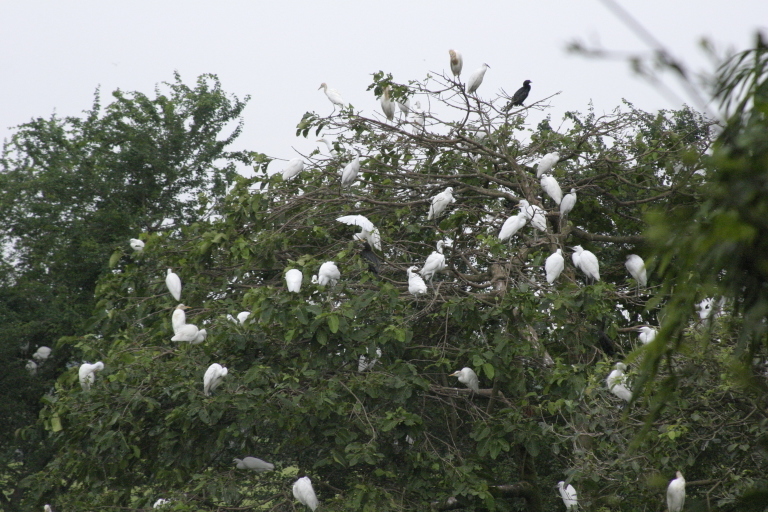
Bang Lang Stork Sanctuary- The Home of Thousands of Storks
Today, this place is a popular stop of international and domestic tourists in Vietnam travel coming to view thousands of storks. More than ten species of storks are residing here. Visitors can see these birds returning home in late afternoon after the whole day seeking food from other places. There is a tall wooden viewing platform to view the birds. The scenery of thousands of storks flying around and gathering in the Garden is really exotic to visitors.
Ninh Kieu Pier- A Symbol of Can Tho City
Can Tho City lies along one of the biggest rivers in Mekong Delta – Hau river. To have the whole view of this river, travellers should spend some time at Ninh Kieu dock. Ninh Kieu dock, with Ho Chi Minh statue standing still, is the symbol of Can Tho city.
Ninh Kieu Pier can’t compare with the backpacker area in Ho Chi Minh City for the dynamism and variety of tourist services. However, its natural scenery far outshines that of HCMC’s Pham Ngu Lao Street. This is also an embankment and park, thus, it is always in bustle even day or night.
In the morning, visitors in Vietnam travel can roam around here to sightsee and to enjoy the fresh air of Mekong Delta. Many people come here every day to do morning exercise or play sports. This is where you can start your trip to the floating market by renting a boat which can be found everywhere along the dock.

Ninh Kieu Pier at night
In the evening, the food stalls are always ready with many Vietnamese foods, which you cannot miss. The tables are put along the dock so you can enjoy the food while watching the river at night. Every night, Can Tho bridge with sparkling lights, which is the most noticeable thing in dark, can be seen clearly from here.
Also, you can find Can Tho antique market here. Nowadays, this market is where people sell souvenirs for tourists in Vietnam travel. No matter what time you visit Ninh Kieu dock, there is always things for you to do!


